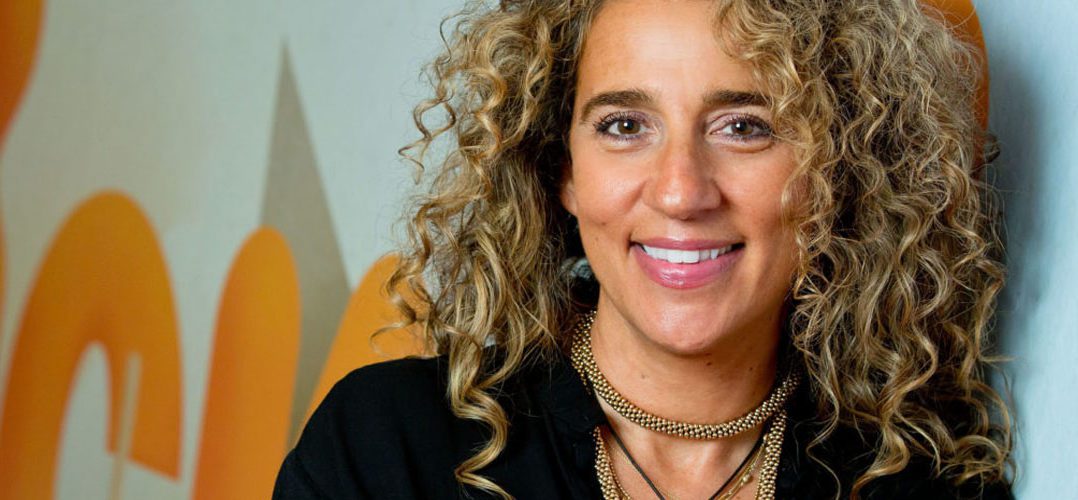The following interview features in the new report from Ampere Analysis—Where next for kids’ TV: Predicting the future of children’s content.
Viacom International Media Networks is division of Viacom Inc. and is comprised of many of the world’s most popular multimedia entertainment brands, including Comedy Central, MTV, Nickelodeon, Nick Jr., Paramount Channel and Spike.
Viacom brands reach more than 3.9 billion cumulative subscribers in 180+ countries and territories via more than 200 locally programmed and operated TV channels and more than 550 digital media and mobile TV properties, in more than 40 languages.
Guy Bisson: What new trends are you noticing in terms of the type of content that is being made for kids?
Nina Hahn: Instead of focusing on content trends, we prefer to look at the trends we see in kids themselves which in turn influences the type of content we develop and produce.
In Viacom’s recent Kids of the World study, our global research team spoke directly with kids across 31 countries to hear their views first hand and see the world from their perspectives. We’ve learned that despite today’s fluid world, kids have very positive, empowered attitudes toward life. The support received from family is at the heart of this, and kids today are very open in sharing their lives with their parents. Friends are also an important source of support and fun for kids and beyond the value of having friends, being a good friend is becoming more important to them. We also found that kids today view themselves as highly independent, curious and creative – 88 percent of kids use their free time to build new skills, even though watching TV remains the top way for them to relax. Given this meaningful knowledge of our audiences’ attitudes and traits, we are able to create content that speaks directly to them through broad, simple and emotional ideas that also infuse play.
> Are you seeing any developments in terms of the way kids’ content is financed?
In more recent years, international partners have been coming together to finance shows and make, in essence, a global financing/creative quilt. These financially frugal new global production models also align with our beliefs at Nickelodeon that great content can originate from anywhere.
Examples of local Nickelodeon shows to have expanded development for an international audience include House of Anubis which had a Dutch and then German version before an Anglo format was made, I Am Frankie which originated as Yo Soy Franky in Latin America and more recently Hunter Street (De Ludwigs) which was co-developed between Nick Holland and Nick globally using one script, one set and one crew but two separate productions back to back — one local and one global.
> What about budgets overall…is there any discernible trend?
Our overall content budget has grown, and we are committed to experimenting with new models that maximize our investment and in particular harness the power of local to ‘glocal’. We take a 360 approach with our content strategy and depending on the nature of the project, decide which avenues and platforms make the most sense to leverage.
> What impact have the SVoD players had on the market for kids’ content and has the impact been positive or negative?
The rapidly evolving media landscape means more content, wherever and whenever kids want to watch it. If we’re not willing to evolve and adapt then we’d leave ourselves at risk, so we view the changes happening as opportunities and thrive on the healthy competition. Among all the change, there is one thing that remains constant — content. To continue producing great characters, great storylines and great partnerships, it’s critical that we listen to what kids are telling us. Research is therefore the cornerstone of our foundation as it allows us to know what kids are thinking and feeling and guides everything we do at Nickelodeon.
> What impact has YouTube and other social and digital-first platforms had on the overall market for kids’ content as well as the way channel-driven kids’ producers think about developing content?
Beyond the Netflix and Amazons of the world, the proliferation of other digital and social platforms has completely changed the type of content offerings available for kids. Kids’ producers are fully aware of this and know that while developing content to sit on our linear channels remains the priority for us, supporting our short form business and developing content that can speak to more than one platform and different time lengths is also essential.
We believe that the new landscape offers ample opportunities and are continuing to broaden our reach, scale and engagement with new audiences and creative talent around the world. Developments in 2017 included the Nickelodeon Animation Shorts Program and Writers Program and new Viacom Digital Studios – a, cross-divisional unit focused on creating and expanding short form content across Viacom and our portfolio of global entertainment brands. We also launched Nick Play and Nick Jr. Play in the UK – mobile experiences that offer pre-schoolers their favourite Nickelodeon and Nick Jr. shows, games and music in one. We have also introduced interactive, play-along episode technology for Blaze and the Monster Machines in our NOGGIN app (US, Latin America). The play-along videos allow pre-schoolers to engage with their favourite Blaze characters by tapping, touching, swiping or speaking to navigate through enhanced educational experiences that promote science, technology, engineering, math and social-emotional skills in a fun way.
> When developing a kids show, how do you think strategically about each type of platform (TV channel/YouTube/SVoD) and what is the interplay between them for a given kids property/franchise?
We take a full 360 approach towards every piece of content we make and try to develop content that’s platform agnostic so that kids can consume Nickelodeon content seamlessly on the platform of their choice.
Our work with break-out star and teen influencer JoJo Siwa is a great example of our 360 model in action. JoJo burst into the Nickelodeon family in 2016 and we, much like our audience, fell in love with her fun and vibrant personality as well as her stance against bullying. Since then, our work with her has extended into a global consumer products program, headlining performances at our tent pole events, a TV special on her life as well as co-hosting duties on Lip Sync Battle Shorties.
> Why do you think kids’ linear channels remain strong given the behavioural shifts in the younger audience would suggest a move away from linear?
TV has always been a key platform historically and will continue to be so. However, kids want their content to be accessible and we realize the importance of being everywhere our audience is. Our focus remains on delivering great characters, great storylines and relatable content that kids can enjoy wherever they are.
> How important is gender in young kids’ programming…have there been any moves to non-gendered content for younger kids?
A central part of Nickelodeon’s DNA is to create content that promotes gender parity — it’s one of the big defining characteristics that sets us apart and it’s important for viewers to come to the channel knowing that they can expect this type of offering. For example, some of our shows that feature empowering female characters include Nella the Princess Knight, I Am Frankie and our newest live action series Knight Squad.
> Have there been any changes in where you look for new kids characters or development opportunities?
While our overarching creative ambition remains the same – to make the very best content we can for our audiences around the world, how we do this has been the biggest game changer. In the increasingly competitive and evolving creative landscape, opportunities can come from literally anywhere, so it’s crucial to broaden where we source, create and seek inspiration. We will continue to develop great characters, great storylines, great partnerships and great research from around the world to create franchises that have the power to excite and engage kids everywhere.
> Thinking about all the changes in viewing behaviour/platforms and distribution, what sort of kids’ content will buyers be looking for in five years’ time?
If only I knew! But what I do know is that Nickelodeon continues (as it always has) to have its finger on the pulse of what appeals to kids around the world. We strive to be everywhere kids are and the next five years for us will continue with that mantra — plus so much more!
Top photo : © Grainge Photography




